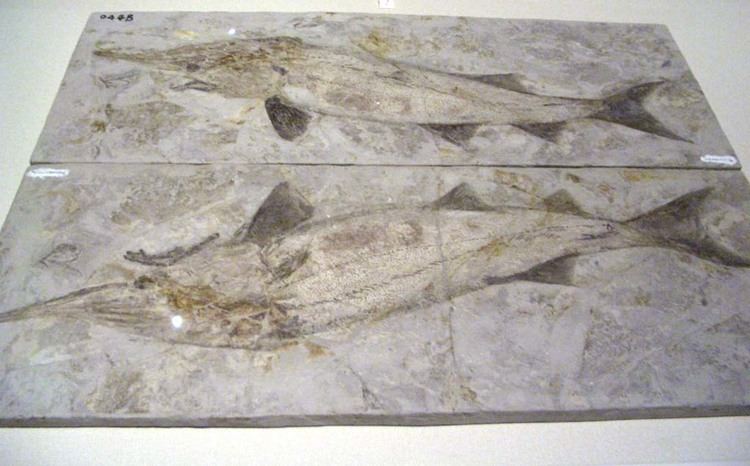Family Polyodontidae Species †P. liui Rank Genus | Subfamily †Protopsephurinae Phylum Chordata | |
 | ||
Similar Peipiaosteus, Acipenseriformes, Crossopholis, Sinamia, Monjurosuchus | ||
Protopsephurus is an extinct genus of paddlefish which existed in China during the Barremian age to the Aptian age of the Early Cretaceous period. It contains the species Protopsephurus liui, which was measured to be 7 meters (23 feet) in length, although no weight estimate could be made at the time. It is one of the largest prehistoric Cretaceous freshwater fishes to have ever existed.
Contents
Description
The remains of 2 individuals that have been discovered in the Yixian Foundation can be compared to living members of the Paddlefish family to show that very little has changed about them since the Early Cretaceous. Unlike other filter-feeding fish that have been discovered with many members but extremely fragmented remains, only two members of Protopsephurus have been discovered and nearly all the skeletal elements of this chondrostean ray-finned fish species have remained. It is the largest freshwater fish of the Cretaceous era, to which the Cretoxyrhina was the largest predatory saltwater fish of the Cretaceous era. The rostrum is narrow and sword-like instead of broad and paddle-like, and its skin is smooth and scaleless. Its eyes are minimalized and poorly developed. It has a heterocercal tail, and the origin of their name comes from the belief that the paddlefish used their rostrum to excavate bottom substrate in order to find prey.
Size
Protopsephurus is the largest known member of the Polyodontidae. Their sizes, due to lack of habitat loss and the lack of large freshwater predators, were able to rival and exceed the size of their living relatives Chinese Paddlefish (Psephurus gladius) and American Paddlefish (Polyodon spathula). The two specimens recovered by Lu in 1994 were measured and shown to have grown to 7 meters (23 feet), greater than the maximum size of present day Chinese Paddlefish.
Paleobiology
Protopsephurus was a nektobenthic carnivore, swimming along the bottoms of freshwater rivers and estuaries, using their array of specialized gill rakers lining their gill basket to extract zooplankton and phytoplankton from the water, along with catching and eating smaller fish. Their most likely source of food was Ostracod (seed shrimp) that inhabited the bottoms of rivers and other planktivorous fish like the members of Lycoptera. Phases during the Yixian Formation were riddled with Limnic eruption which caused freshwater lakes to be filled with massive amounts of phytoplankton and other diverse plantlife, increasing the amount of food available for them. The phytoplankton that bloomed from these river systems and drained into the ocean allowed the Protopsephurus to breed upstream via broadcast spawning, giving their offspring a safe environment away from larger members and allowing them to reintegrate into the lakes that juveniles and adults inhabited. Protopsephurus did not only need to rely on the consumption of plankton, and had a body covered with sensory pores. These sensory pores allowed it to forage for zooplankton and identify their swimming and feeding habits. The most powerful of these electroreceptors were ampulla (hair cells), lined along their giant rostrum and allowed them to easily identify and locate their prey.
Etymology
The name comes from Ancient Greek words "protos" (first) and "psepharos" (cloudy/gloomy one). However the name also translates to "first pebble bearer" from the words "psephus" (pebble) and "phorus" (holder), commonly spelled as "psephurus". Eduard von Martens, a German zoologist and the first person to describe its living relative the Chinese Paddlefish, did not provide a definition on the meaning of the binomial name.
